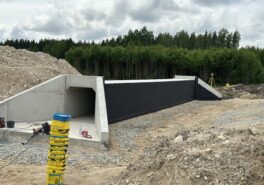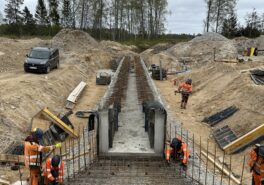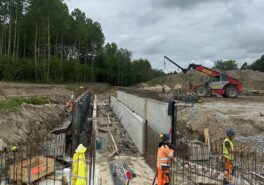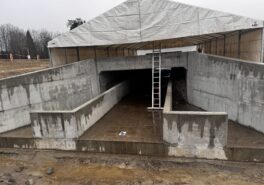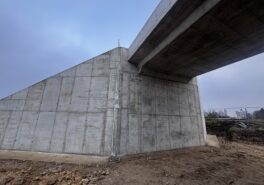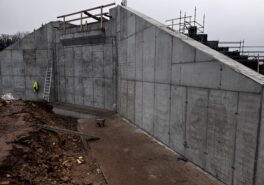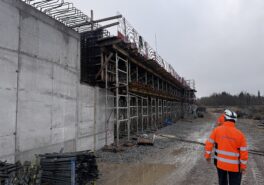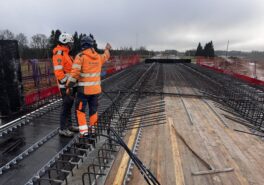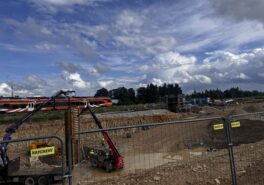Since the beginning of this year, we have been working on the Rail Baltica alignment in Rapla County, where we are building small tunels- box-culverts for the main contractor Verston on the Raplamaa Phase I and II section between Kohila and Rapla. Our scope includes 41 box-culverts with a total length of 840 metres, amounting to nearly 3000 m³ of cast-in-situ concrete structures. Their construction requires approximately 12,600 m² of formwork and about 400 tonnes of reinforcement steel. Most of the volume will be completed this year, with the construction of seven culverts continuing into next year.
Box-culverts are essentially reinforced concrete tunnels that guide water and terrain through the infrastructure and ensure the technical functionality of the railway. On the Rail Baltica alignment, they also play an important role in maintaining ecological connectivity – by providing safe passageways, wildlife and smaller mammals can move within their natural habitats without crossing the railway. This reduces landscape fragmentation and preserves the continuity of natural movement corridors. While Rail Baltica connects Estonia with Europe, it is equally significant that the railway helps reconnect Estonia’s own natural areas, which have long been fragmented by roads and other infrastructure.
New railway viaducts: Pureva and Tamme
In late summer we also began cooperation with Järelpinge Inseneribüroo, under whose contract we are constructing two new railway viaducts on the same section: Pureva and Tamme.
The Tamme viaduct is a familiar type of structure for Maru Betoonitööd – a tunnel-type crossing commonly used on the Rail Baltica line. The structure includes more than 400 m³ of concrete, around 1000 m² of formwork, and approximately 50 tonnes of reinforcement steel.
Pureva – the longest and most technically unique railway viaduct built by Maru Betoonitööd to date
The Pureva viaduct is exceptional in several respects. It is our first true railway viaduct carrying Edelaraudtee train traffic over the Rail Baltica main line – a railway-over-railway structure. It is also the longest viaduct we have built to date: 105 metres, more than 1100 m³ of concrete, nearly 3000 m² of formwork, and about 200 tonnes of reinforcement steel. We started the works in August, and the casting of the viaduct’s deck slab is scheduled for the end of November.

